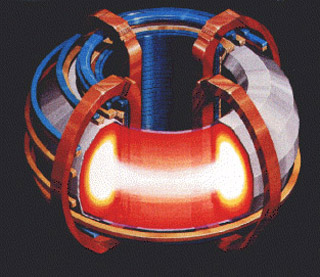Course Description
This course discusses MHD equilibria in cylindrical, toroidal, and noncircular tokamaks. It covers derivation of the basic MHD model from the Boltzmann equation, use of MHD equilibrium theory in poloidal field design, MHD stability theory including the Energy Principle, interchange instability, ballooning modes, second …
This course discusses MHD equilibria in cylindrical, toroidal, and noncircular tokamaks. It covers derivation of the basic MHD model from the Boltzmann equation, use of MHD equilibrium theory in poloidal field design, MHD stability theory including the Energy Principle, interchange instability, ballooning modes, second region of stability, and external kink modes. Emphasis is on discovering configurations capable of achieving good confinement at high beta.
Course Info
Instructor
Departments
Learning Resource Types
grading
Exams
notes
Lecture Notes
assignment
Problem Sets

A Tokamak is a toroidal plasma heated to over 50 million degrees Celsius. The plasma current serves to generate the helical component of the magnetic field necessary for equilibrium. (Image courtesy of NASA.)










